Available 24/7
Available 24/7
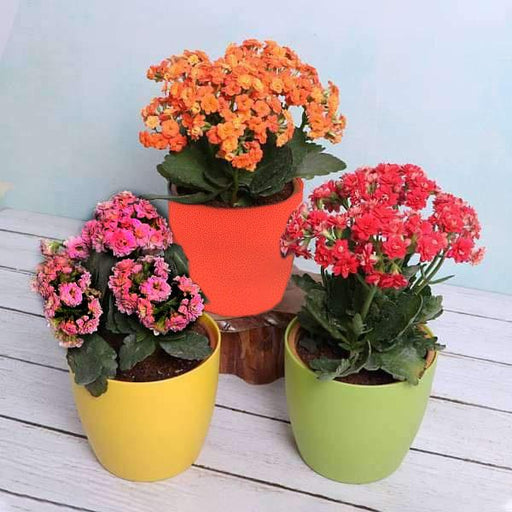
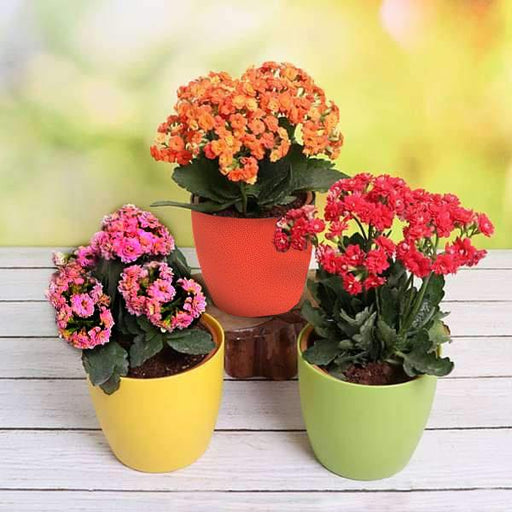 Save 10%
Save 10%
DescriptionThe Kalanchoes are thick leaved elegant flowering succulent houseplants. Make your home garden more vibrant and full of colors by bringi...
View full details Save 18%
Save 18%
DescriptionThis pack contains two 60 cm Spiral Stick Lucky Bamboo Plant + Glass vase + 250g white chip pebbels + 250g black chip pebbels.About Luc...
View full details

DescriptionIf the juvenile foliage along with a more compact plant is preferred, cut off all the climbing stems that develop, this will keep it bus...
View full details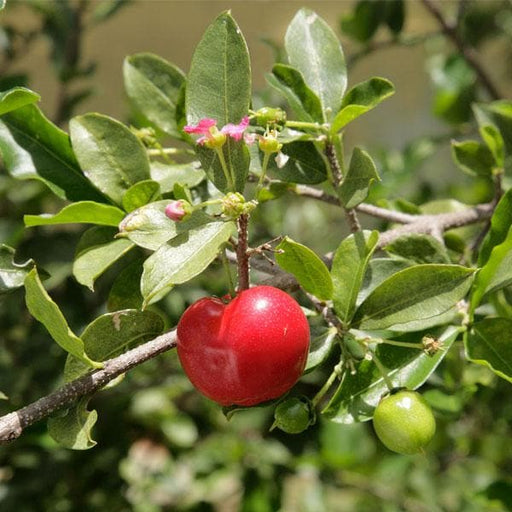 Save 15%
Save 15%
DescriptionGrowing Barbados Cherry is an easy way to add a tropical flair to your garden. When you know its important and how to care for Barbados ...
View full details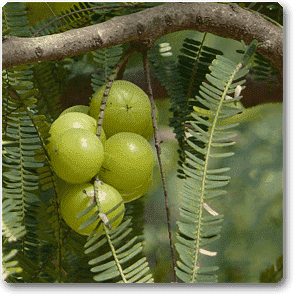 Save 17%
Save 17%
DescriptionImprove immunity of your all family member by growing a nutritious and vitamin rich an amazing Amla plant. Amla is a small to the medium...
View full details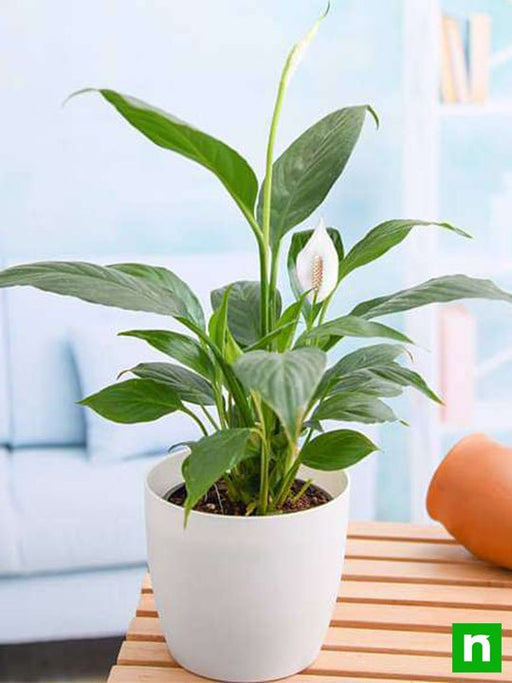
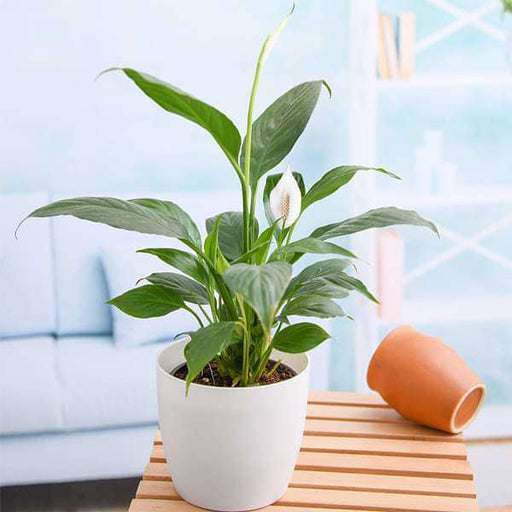 Save up to 15%
Save up to 15%
DescriptionPeace Lily Plant is a very popular and very rare indoor flowering houseplant. It is also an excellent air purifier plant.What makes it s...
View full details
 Save 20%
Save 20%
DescriptionFlowers make intimate connections they increase our connectivity with family and friends. Mogra plant is famously known as Jasmine flowe...
View full details
 Save 10%
Save 10%
DescriptionThe Kalanchoes are thick leaved elegant flowering succulent houseplants. Make your home garden more vibrant and full of colors by bringi...
View full details Save 45%
Save 45%
Description Pack of 4 succulents that are very easy to care for. A perfect pack to start growing plants worry-free. About You get 4 succulent plant...
View full details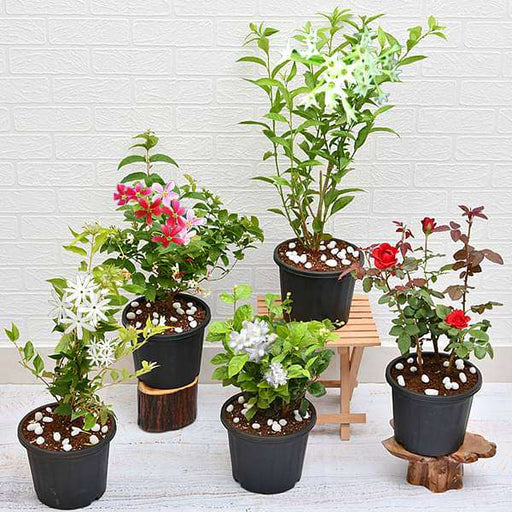 Save 12%
Save 12%
DescriptionAromatic plants bring into a room or house an often overlooked benefit. These plants have a pleasant scent.About You plant a hope when ...
View full details
 Save up to 50%
Save up to 50%
DescriptionIf you long for indoor greenery but have not succeeded with houseplants, consider these beautiful succulents. A perfect pack to start gr...
View full details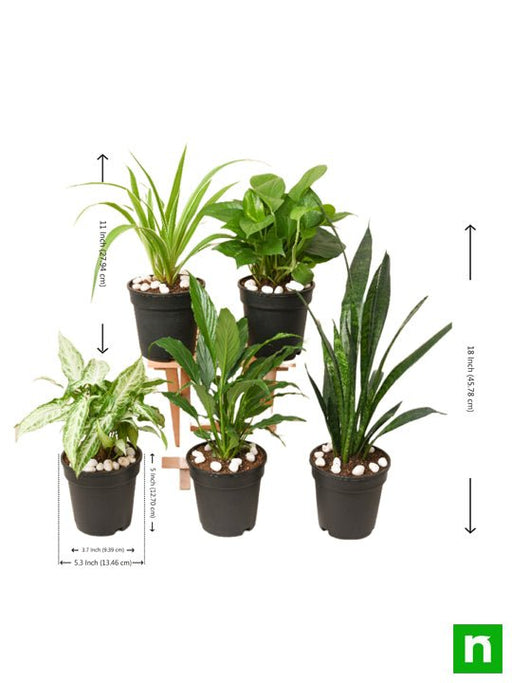
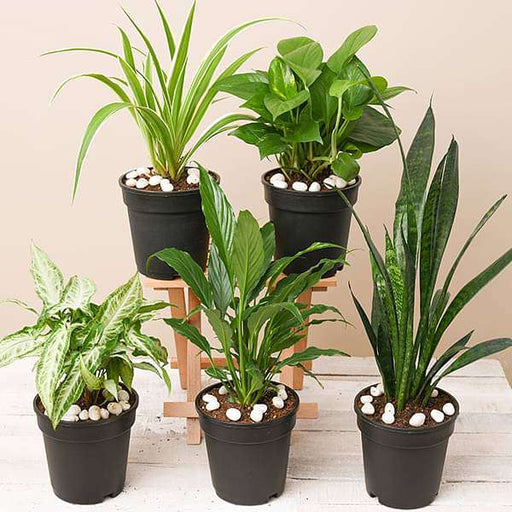 Save 21%
Save 21%
DescriptionThis plants pack contains amazing 5 houseplants + 5 Pots. Surround your home with these best pollution killer plants for a clean and hea...
View full details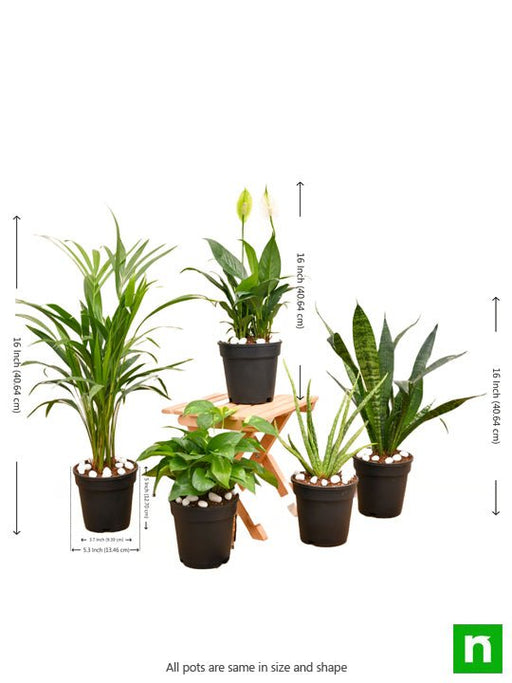
 Save 20%
Save 20%
DescriptionIf you or anyone from your family wants to breathe fresh air, cleaner air in their homes, this 5 plants pack purify the air around and r...
View full details
 Save 40%
Save 40%
DescriptionSet of 2 Bonsai Looking Grafted Adenium PlantsAbout You get 2 Bonsai looking hardy grafted Adenium plants in a single pack.Plants are k...
View full detailsDesert plants are some of the toughest flora on the planet.
With the ability to withstand extreme temperatures, drought, and sandstorms, they have adapted to survive in the harshest environments.
Did you know that the roots of desert plants can extend up to 100 feet into the ground in search of water?
If you're looking to add some desert flair to your garden, try planting a cactus!
This slow-growing plant can take up to 10 years to reach just one inch in height, but it's worth the wait.
Desert plants aren't just pretty to look at - they also have a variety of medicinal uses.
The Aloe Vera plant (Aloe barbadensis) is well-known for its soothing properties and is commonly used to treat burns, cuts, and other skin irritations. The plant's gel-like substance can also be ingested to aid digestion and boost the immune system.
When caring for desert plants, it's important to remember that they thrive in dry, arid environments.
Overwatering can lead to root rot and other issues, so be sure to let the soil dry out completely before watering again. It's also important to provide adequate drainage and avoid planting in areas that are prone to flooding.
Desert plants can also be used for ornamental purposes, with many varieties available in different colors and shapes.
While desert plants are generally low-maintenance, it's important to note that some varieties can be dangerous. The Saguaro Cactus, for example, has sharp spines that can cause injury if not handled properly. Always wear gloves and protective clothing when handling or pruning these plants.
In conclusion, desert plants are a fascinating and hardy group of flora that have adapted to thrive in some of the most inhospitable environments on Earth.
Whether you're looking to add some Southwestern flair to your garden or simply appreciate the beauty of these unique plants, there's no denying their enduring appeal.
With a little care and attention, these desert survivors can provide years of enjoyment and wonder.
Cacti are the quintessential desert plant known for their distinctive shapes, prickly spines, and bright flowers. These plants are built to withstand harsh, dry environments and can live for decades or even centuries. Cacti come in a variety of sizes and shapes, from the towering saguaro to the tiny ball-shaped mammillaria. Some popular species include the golden barrel cactus, hedgehog cactus, and Christmas cactus.
Succulents are a diverse group of plants that store water in their leaves or stems, making them perfect for dry environments. They come in a wide range of shapes and sizes, from the tiny haworthia to the massive agave. Some popular succulent species include the echeveria, sedum, and jade plant.
Agaves are large, dramatic plants that are perfect for adding a touch of the desert to your garden. They are characterized by their rosettes of spiky leaves and tall flower stalks. Agaves are drought-tolerant and require minimal care once established. Some popular species include the blue agave, century plant, and foxtail agave.
Yuccas are another group of plants known for their striking foliage and tall flower spikes. They are often mistaken for agaves due to their similar appearance. Yuccas are native to the Americas and are well-adapted to arid environments. Some popular species include the Joshua tree, Spanish bayonet, and banana yucca.
The Joshua tree is an iconic desert plant that is native to the southwestern United States. It is characterized by its spiky leaves and unique shape, which inspired its name. Joshua trees can live for centuries and are an important part of the desert ecosystem. They are often used as a symbol of the American Southwest.
Despite the harsh conditions of the desert, there are many beautiful flowers that thrive in these environments. Some popular desert flowers include the desert marigold, sand verbena, and desert bluebells. These plants are adapted to the extreme heat and dryness of the desert and can add a splash of color to your garden.
Desert shrubs are an important part of the desert ecosystem, providing food and shelter for a variety of animals. Some common desert shrubs include the creosote bush, saltbush, and cholla. These plants are often spiky and tough, making them well-adapted to their environment.
Desert trees are often characterized by their deep roots and small leaves, which help them conserve water. Some popular desert trees include the palo verde, ironwood, and mesquite. These trees are often used in landscaping to add height and shade to a garden.
Desert plants have been used for medicinal purposes for centuries. Some commonly used desert medicinal plants include the prickly pear cactus, desert lavender, and desert sage. These plants are known for their healing properties and are often used in traditional medicine.
In addition to their medicinal properties, some desert plants are also edible. Some popular desert edible plants include the jojoba, mesquite, and agave. These plants are often used in cooking and can be a sustainable source of food in arid regions.
Drought tolerant plants are able to survive in low-water environments, making them a great choice for desert landscapes. Some popular drought tolerant plants include Lavender, Sage, and Rosemary.
Xeriscaping is a landscaping technique that uses drought-tolerant plants and other water-saving strategies to create a beautiful and sustainable garden. This technique is especially popular in arid regions, where water is a precious resource. Xeriscaped gardens can be just as beautiful and colorful as traditional gardens, while requiring less water and maintenance.
Desert plants have a variety of adaptations that allow them to survive in harsh environments. Some common adaptations include succulent leaves, deep roots, and spiky foliage. These adaptations help desert plants conserve water and protect themselves from predators.
Desert landscaping is a popular trend in arid regions, where traditional landscaping techniques may not be sustainable. Desert landscaping often incorporates drought-tolerant plants, rock gardens, and other water-saving features. This type of landscaping can be both beautiful and environmentally friendly.
The desert climate is characterized by hot, dry weather with little rainfall. This climate can be challenging for plants and animals, but many species have evolved to thrive in these conditions. Understanding the unique challenges of the desert climate is important when choosing plants for a desert garden.
Drought-resistant plants are able to survive in low-water environments, making them a great choice for desert gardens. Some popular drought-resistant plants include agaves, aloes, and yuccas. These plants have adapted to the desert climate and can thrive with minimal watering.
Desert soil is often sandy or rocky and may be low in nutrients. This can make it challenging to grow plants, but there are many species that are well-adapted to these conditions. Adding organic matter and other soil amendments can help improve the quality of desert soil.
The desert is a unique and fragile ecosystem that is home to a variety of plant and animal species. Conservation efforts are important for protecting these habitats and preserving the biodiversity of the region. Using sustainable landscaping techniques, supporting conservation organizations, and reducing water usage are all ways to support desert conservation.
The desert is home to a variety of wildlife, including snakes, lizards, birds, and mammals. Many of these species rely on desert plants for food and shelter. Creating a desert garden can provide habitat for these animals and support local biodiversity.
Designing a desert garden can be a fun and rewarding project. Incorporating different plant textures and colors, using rock and gravel accents, and incorporating water-saving features are all important considerations. By carefully selecting plants and creating a sustainable design, you can create a beautiful desert garden that requires minimal maintenance.
Desert plants are a group of plants that have adapted to survive in arid and hot desert environments.
Desert plants have developed specialized adaptations such as thick waxy leaves, spines, or hairy coverings that help to conserve water and protect them from extreme temperatures.
Most desert plants have long roots that reach deep underground to access the water table. Some also have the ability to store water in their stems and leaves.
No, not all desert plants have spines. Some have thick leaves or hairy coverings instead, while others have no visible adaptations.
Yes, many desert plants can be grown indoors as long as they are provided with adequate sunlight and soil drainage.
Most desert plants do not require fertilizer as they are adapted to nutrient-poor soils. However, some may benefit from occasional feeding with a low-nitrogen fertilizer.
It's best to let the soil dry out completely before watering again. This can vary depending on the plant, but most desert plants only need to be watered every few weeks or even months.
It's best to plant desert plants in well-draining soil that mimics their natural habitat. Adding sand or gravel to regular soil can improve drainage.
Desert plants such as Aloe Vera, Jojoba, and Creosote Bush have been used for centuries for their medicinal properties. They can be used to treat skin irritations, digestive issues, and more.
Yes, many desert plants are used for landscaping due to their unique appearance and low maintenance requirements.
The Saguaro Cactus is the largest desert plant and can grow up to 60 feet tall.
The Pygmy Date Palm is one of the smallest desert plants and typically grows to about 6-10 feet tall.
Yes, some desert plants such as the Joshua Tree and the Desert Ironwood are considered endangered due to habitat loss and other factors.
Yes, some desert plants such as the Prickly Pear Cactus and the Mesquite Tree have edible parts that can be used for food and drink.
No, not all desert plants bloom. Some have no visible flowers, while others only bloom under certain conditions.
Many desert plants can be propagated through stem cuttings, seed germination, or division.
Yes, but it's important to use caution as many desert plants have sharp spines or needles. Wear protective clothing and use a sharp, clean tool.
Yes, some desert plants such as the Jimsonweed and the Desert Rose are poisonous and should be handled with care.
This can vary depending on the plant, but many desert plants can live for decades or even centuries.
Yes, many desert plants can be grown in containers as long as they are provided with adequate drainage and soil.
Common pests and diseases that affect desert plants include spider mites, mealybugs, scale insects, aphids, and whiteflies. These pests can cause stunted growth, leaf damage, and even death if left untreated.